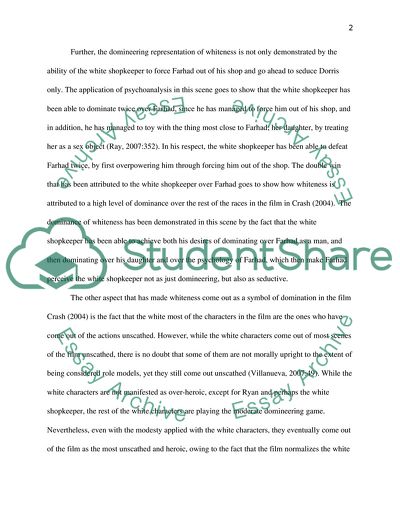Cite this document
(Analysis how Whiteness Operates in the Film in Crash Essay Example | Topics and Well Written Essays - 2750 words, n.d.)
Analysis how Whiteness Operates in the Film in Crash Essay Example | Topics and Well Written Essays - 2750 words. https://studentshare.org/sociology/1864178-analyse-how-whiteness-operates-in-the-film-crash
Analysis how Whiteness Operates in the Film in Crash Essay Example | Topics and Well Written Essays - 2750 words. https://studentshare.org/sociology/1864178-analyse-how-whiteness-operates-in-the-film-crash
(Analysis How Whiteness Operates in the Film in Crash Essay Example | Topics and Well Written Essays - 2750 Words)
Analysis How Whiteness Operates in the Film in Crash Essay Example | Topics and Well Written Essays - 2750 Words. https://studentshare.org/sociology/1864178-analyse-how-whiteness-operates-in-the-film-crash.
Analysis How Whiteness Operates in the Film in Crash Essay Example | Topics and Well Written Essays - 2750 Words. https://studentshare.org/sociology/1864178-analyse-how-whiteness-operates-in-the-film-crash.
“Analysis How Whiteness Operates in the Film in Crash Essay Example | Topics and Well Written Essays - 2750 Words”. https://studentshare.org/sociology/1864178-analyse-how-whiteness-operates-in-the-film-crash.


